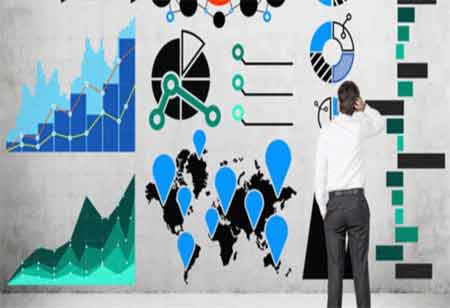THANK YOU FOR SUBSCRIBING
Be first to read the latest tech news, Industry Leader's Insights, and CIO interviews of medium and large enterprises exclusively from CFO Tech Outlook
THANK YOU FOR SUBSCRIBING

By
CFO Tech Outlook | Thursday, July 22, 2021
Stay ahead of the industry with exclusive feature stories on the top companies, expert insights and the latest news delivered straight to your inbox. Subscribe today.
Real-time analytics enable businesses to identify even slight differences in a user's behavior to detect fraud. Additionally, machine learning-powered solutions can spot anomalies in a user's transaction history and, more impressively, publicly available data like social media.
FREMONT, CA: Manual data analytics is both costly and imprecise in today's financial climate. According to a report, global demand for artificial Intelligence in fintech is expected to climb from 7.91 billion dollars in 2020 to 26.67 billion dollars in 2026. For a successful corporate finance firm, automated predictive analytics is essential. One may be wondering why this is the case. Take a look below at how real-time analytics is changing the finance industry and how different services utilize it to increase profits.
For almost a century, companies in various industries have been automating tasks. For example, financial institutions are now embracing analytics automation tools and predictive modeling to achieve the same with data processing. Businesses can use automated analytics to establish a data strategy that includes descriptive, predictive, and prescriptive analytics. Today, almost all successful financial and banking institutions use automated predictive analytics to help them maximize revenues since it consolidates and simplifies data. Here are a few examples of how predictive analytics and forecasting can be used in finance:
Fraud detection
Real-time analytics enable businesses to identify even slight differences in a user's behavior to detect fraud. Additionally, machine learning-powered solutions can spot anomalies in a user's transaction history and, more impressively, publicly available data like social media. For example, unless the customer confirms their actions, the fintech platform will automatically restrict transactions, significant cash withdrawals, or access from unusual areas.
Modeling customer value
Banking institutions have traditionally relied on algorithm-based software to generate information on potential consumers. Predictive analytics technologies automatically evaluate a customer's credit history, transaction history, government interactions, and social media activity. As a result, banks can bet on any potential credit risks and net profit for various users.
Personalization
Customers are entirely reliant on financial institutions; they are their most significant asset. According to a report, tailored experiences help the fintech business boost revenue by 15 percent. Predictive analytics and Artificial Intelligence (AI) provide essential insights into social-demographic trends, spending habits, and various other factors that help tailor customer service.
See Also: Top 10 API Solution Companies
I agree We use cookies on this website to enhance your user experience. By clicking any link on this page you are giving your consent for us to set cookies. More info



